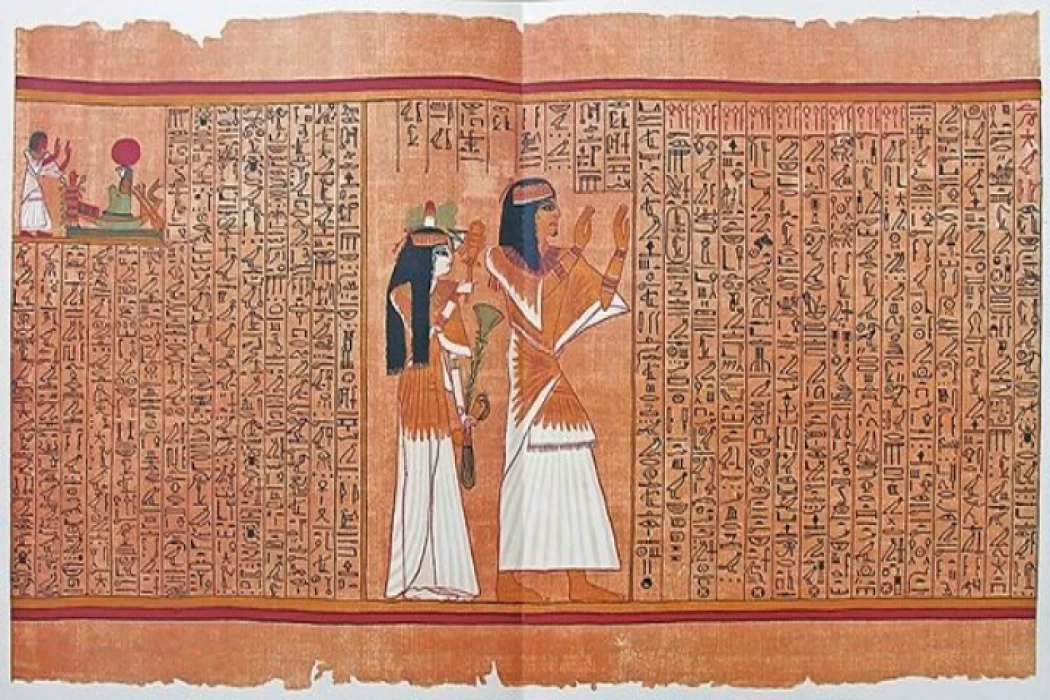
Facts About Sia God of thoughtfulness
Siya or SA is an ancient Egyptian god, considered the deification of the cosmogonic idea of the sacred nine of Heliopolis, perhaps equating the intellectual energies of the heart of Ptah in the cosmogonic idea of MANF. He also had a connection with writing, often appearing in human form holding a roll of papyrus, and it was believed that this papyrus was the embodiment of intellectual achievements.
Siya appears standing on a ship of the sun during its journey during the night in the texts of the other world during the New Kingdom, as well as on the images of tomb walls, with Ho (the word of creation), and Hakka (the God of magic), and these gods were considered as special abilities that help the creator, and although Hakka had its cult, siya had no independent cult at all.
Origins and Worship
Sia was first mentioned in writing during the Old Kingdom era (2613–2181 BCE), when Pharaoh Khafre was in power (2520–2494 BCE). At first, Sia was portrayed as a man with ears or an ear with a human head, and was linked to the idea of “hearing”. They became a distinctive and intriguing character in the Egyptian pantheon as their function grew throughout time to include the domain of contemplation.
Although Sia was not widely worshipped, some groups, including the priests of the god Thoth, who frequently identified with knowledge and intelligence, held them in high regard. There are multiple dedications to Sia in the Karnak temple complex, which was constructed during the New Kingdom era (1570–1085), suggesting a strong presence in Thebes (present-day Luxor).
Attributes and Symbolism
Their unique appearance—a human figure with ears or a head made of ears—defines Sia's iconography. Symbols such as the was sceptre (the emblem of power) or the ankh (the key of life) are frequently used in conjunction with this odd portrayal...The ears might stand for Sia's capacity to hear and comprehend people's ideas and wishes, while their association with Thoth might suggest a link to communication, magic, and wisdom.
In several representations, Sia is seen clutching an ear-adorned staff or donning a classic Egyptian crown. Their relationship to the divine and their function as a go-between for humans and the gods are highlighted by these visual components.
Importance to Ancient Egyptian Culture
Sia was important to ancient Egyptian civilization because they made it easier for people to communicate with the gods... Sia, the deity of thinking, was regarded to have the ability to decipher wants and thoughts, enabling people to communicate with the holy world.This idea was especially significant in ancient Egyptian culture, where offerings and ceremonies were intended to please the gods and maintain harmony between the natural world and human society.
Sia's impact is evident in many facets of day-to-day existence:
Rituals and Offerings: In order to ask Sia for wisdom and direction, people would present her with gifts and prayers. They assumed that Sia would communicate their ideas and wishes to the gods in exchange, making sure that their pleas were taken into consideration.
Communication: Sia had a significant role in resolving disputes between people because of their associations with hearing and comprehension. They also contributed to social harmony by fostering communication between humans and gods.
Wisdom and Knowledge: Sia was a patroness of knowledge and wisdom, and as such, her influence was felt in fields like as astronomy, mathematics, and literature... When faced with difficult issues or dilemmas, scholars and scribes would frequently turn to Sia for help.
Sia and Hu would form a triad with Heku, god of magic, medicine and the primordial force in the universe which empowered life and sustained Ma’at. Sia represented the intellect while Hu symbolized the word of the Creator Ptah (or Atum) which brought thought into reality and Heku was the underlying force which gave them power.














